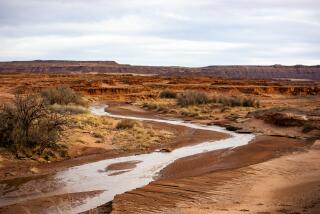Maya developed sophisticated water system at Tikal
A new study of the landscape around the city of Tikal in the Peten rainforest of Guatemala shows that Maya of the Classic period -- from about AD 250 to 800 -- used Stone Age technology to build sophisticated water management systems that allowed the city’s population to survive and even thrive during the droughts that frequently plagued the region’s summers. The simple techniques that were used could provide lessons for modern-day farmers living in the region, the researchers reported.
Tikal, nearly 200 miles north of Guatemala City, was the capital of one of the most powerful pre-Columbian Central American societies. The city covered an area of a little more than 6 square miles and included more than 3,000 structures, including massive temples. Population estimates range from 10,000 to 90,000 people. The precise cause of its downfall is not clear, but it is generally believed that a combination of economic chaos, drought and warfare led to a collapse of the Maya civilization by about AD 950.
A team led by archaeologist Vernon L. Scarborough of the University of Cincinnati reported Monday in the Proceedings of the National Academy of Sciences that early colonization of the site probably occurred on a ridge where natural springs flowed at the head end of a ravine. The first settlers widened the ravine and built a dam to trap the outflow of water.
As rock was quarried to build pyramids and other structures, the leftover holes were plastered to be made watertight and became reservoirs to hold runoff during the winter rains. Ultimately, at least eight separate reservoirs were constructed. The Tikal residents also brought in sand from miles away to filter water entering the reservoirs to render it potable, and built switching stations that facilitated seasonal filling and release of the reservoirs. Among the many achievements documented by the team were the largest ancient dam identified in the Maya area of Central America and the first cofferdam built for dredging a reservoir. Taken together, the authors wrote, these engineering feats allowed Tikal to become one of the “most long-lived tropical civilizations.”
Although modern technology is clearly superior to the Maya approach, there are many locales in the region where access to energy sources is limited or even completely unavailable, the authors said. In such cases, the Maya technology could provide a path to sustainable water supplies and farming.
LATimesScience@gmail.com
Twitter/@LATMaugh






